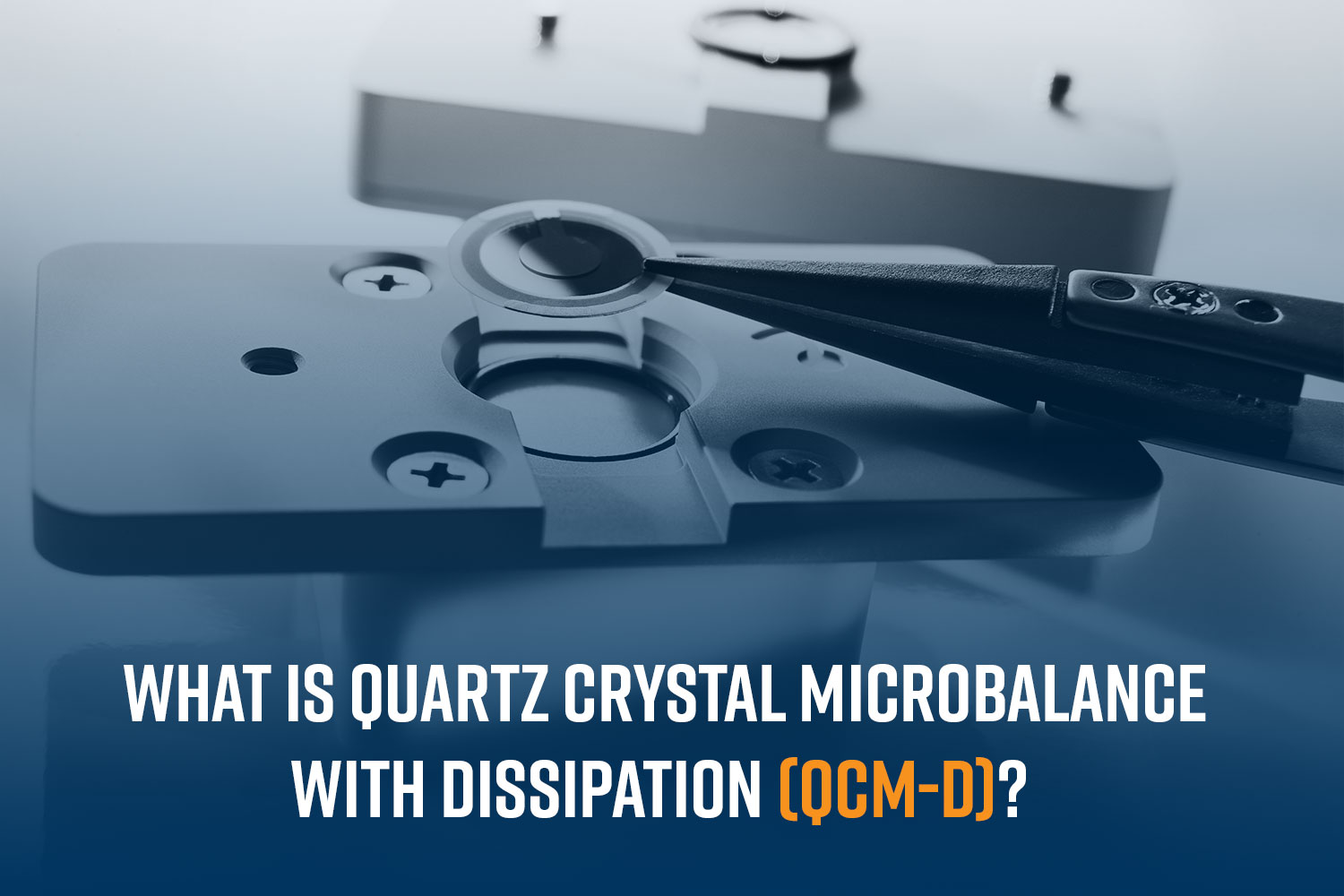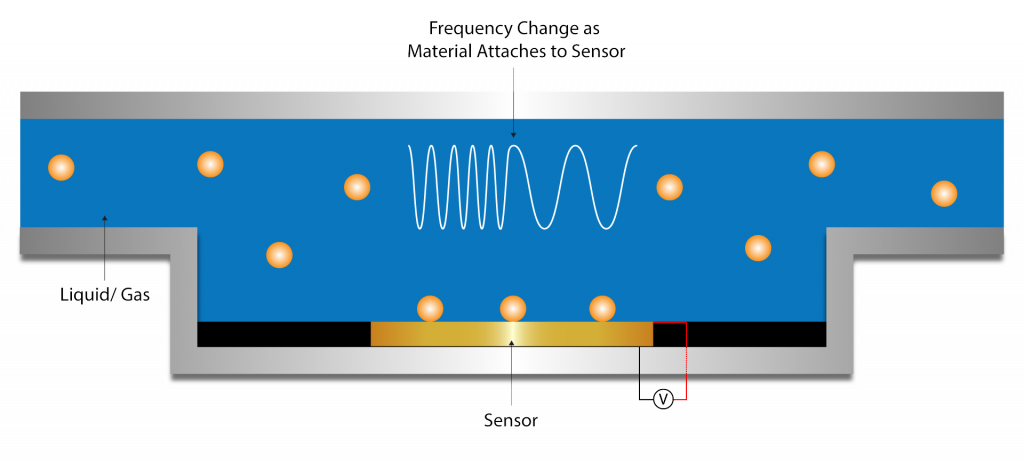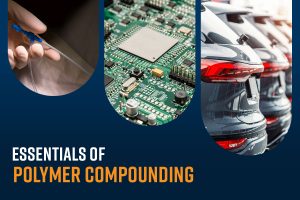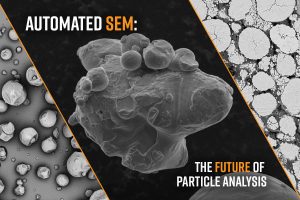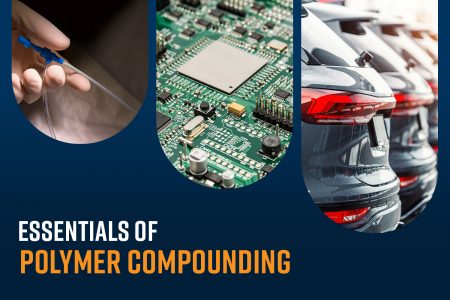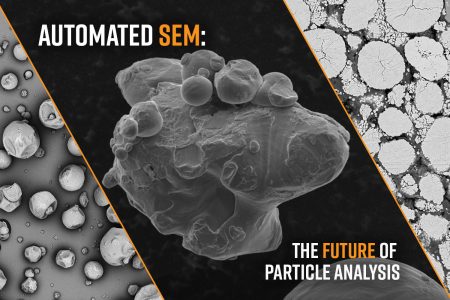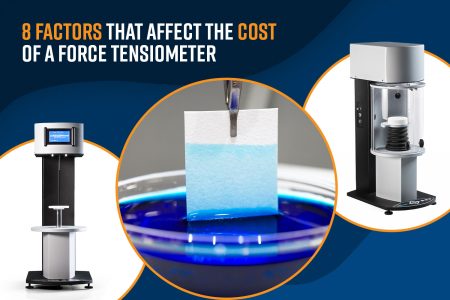Quartz Crystal Microbalance with Dissipation (QCM-D)
QCM-D is a sensitive technique that quantifies changes in mass and viscoelastic properties of materials on a surface.
QCM-D can track real time molecular interactions on a nanoscale level during surface events such as, adsorption, desorption, binding, swelling/collapse, crosslinking, degradation, and etching. The technique utilizes the piezoelectric properties of quartz crystal sensor, that causes the sensor to oscillate at a specific frequency when an alternating electric field is applied. When a material binds to the surface of the sensor, the added mass causes a change in the oscillation frequency (Figure 1). The change in frequency is directly proportional to the mass of the material bound to the surface.
Quartz Crystal Microbalance with Dissipation monitoring (QCM-D) adds another dimension to this measurement by providing information about the viscoelastic properties of the layer attached to the sensor. Information about the viscoelastic properties is obtained by turning off the driving alternating electric field and monitoring the rate of decay of the oscillation of the quartz crystal. The rate of decay, or energy dissipation, reveals rigidity or flexibility of the layer. The high dissipation rate represents a soft/flexible layer and low dissipation rate represents a rigid layer.

How Does QCM-D Work?
The core of the technology is a quartz crystal sensor that is coated with metal electrodes, typically gold, on both sides to apply voltage across the sensor. The active surface is further modified by a thin film of material mimicking the surface of interest. For example, if material binding to a glass surface is the goal of the study, the quartz sensor is coated with glass. If the goal of the study is to study protein interactions, then the active surface is coated with gold and the protein molecules are attached either through adsorption or chemical coupling. The choice of coating material is crucial as it influences the sensitivity and specificity of the measurement.
The sensor is then placed in the measurement chamber and exposed to either liquid or gas environment as required by the experimental design. Measurement can be made in either stagnant or flow conditions. An alternating electric field is applied to the crystal causing it to oscillate at its resonant frequency. Once a baseline frequency and dissipation plots have been collected, the material of interest is introduced to the measurement chamber. The changes in frequency and dissipation are recorded to monitor the surface interaction. The changes in frequency are analyzed to determine the mass of the material that was either bound to the surface or was removed. The dissipation signal provides information about the changes in viscoelastic properties of the bound material on the surface. The analysis can reveal not only the amount of material that binds to the surface but also insights into the interaction strength, conformational changes, and the mechanical properties of the film in real-time.
Advantages of QCM-D
QCM-D has numerous advantages including:
- QCM-D provides real-time data, allowing researchers to observe dynamic processes as they occur.
- The technique is highly sensitive to mass changes, making it suitable for studying molecular interactions at very low concentrations.
- QCM-D can be used in various environments (liquid, gas, vacuum) and with a wide range of materials, making it applicable across numerous scientific disciplines.
- QCM-D is sensitive to the surrounding environment thereby making it useful as sensor for detecting environmental pollutant, pathogens and alike.
- QCM-D data recorded in real-time under in situ conditions can be invaluable in process monitoring and optimization.
- QCM-D can be combined with other techniques including electrochemistry, microscopy, and ellipsometry to obtain complementary data from the same surface.
What information does QCM-D provide?
QCM-D provides detailed information about the properties and behavior of materials at surfaces and interfaces. Researchers can learn a variety of things, including:
Mass Changes at the Nanogram Level: QCM-D is highly sensitive to changes in mass on the sensor surface with a limit of detection of 0.24 ng/cm2. It can detect the adsorption or desorption of molecules, which is particularly useful for studying:
- Biomolecular interactions such as protein binding, DNA hybridization, and lipid membrane formation.
- Polymer adsorption and layer-by-layer assembly that can monitor the growth of thin films and coatings in real time.
- Studying the material compatibility of protein drugs and food ingredients.
- Understanding how chemical modifications or reactions affect the mass of materials on a surface.
Viscoelastic Properties: QCM-D provides insights into the viscoelastic properties of the material including:
- Distinguishing between rigid, solid-like films and soft, viscoelastic layers.
- Conformational changes in proteins and other biomolecules.
- Observing structural changes of a material over time or in response to environmental conditions like temperature, pH, or ionic strength.
Kinetics of Interaction: QCM-D can provide real-time data, allowing researchers to study the kinetics of interactions, including:
- Understanding how quickly molecules attach to or detach from surfaces.
- Observing the rate of conformational changes and phase changes of materials on the surface.
Layer Thickness: QCM-D can estimate the thickness of thin films by analyzing the frequency and dissipation data that can be used for:
- Characterizing the formation of single or multimolecular layers.
- Studying the formation and properties of lipid bilayers or cell membrane mimics.
Conclusion
In the world of material science and surface chemistry, it is essential to understand the interactions at surfaces and interfaces. QCM-D is a powerful and versatile tool that has transformed our ability to study surface interactions at the nanoscale. It offers a comprehensive view of surface interactions, combining mass sensitivity with mechanical property analysis of materials bound to a surface. By providing detailed insights into both the amount and nature of materials at surfaces, QCM-D helps understand and control the molecular interactions that underlie many processes at a surface. As technology advances, QCM-D continues to evolve, offering even more precise and comprehensive data, further expanding its applications and impact in scientific research.

